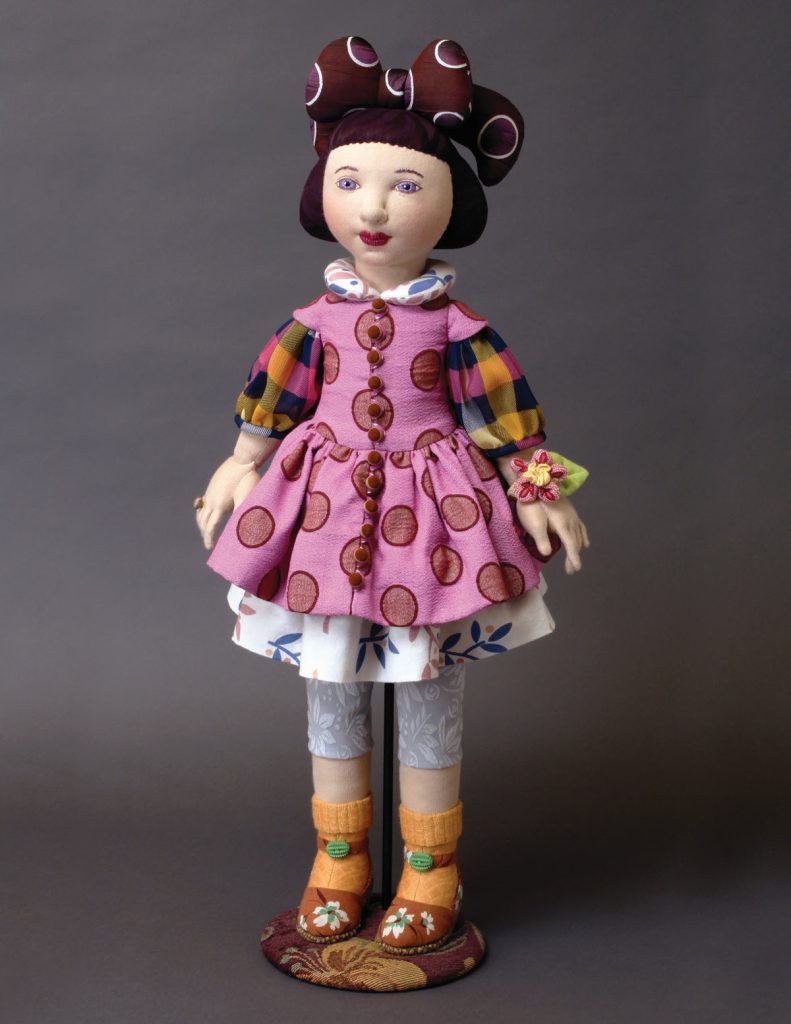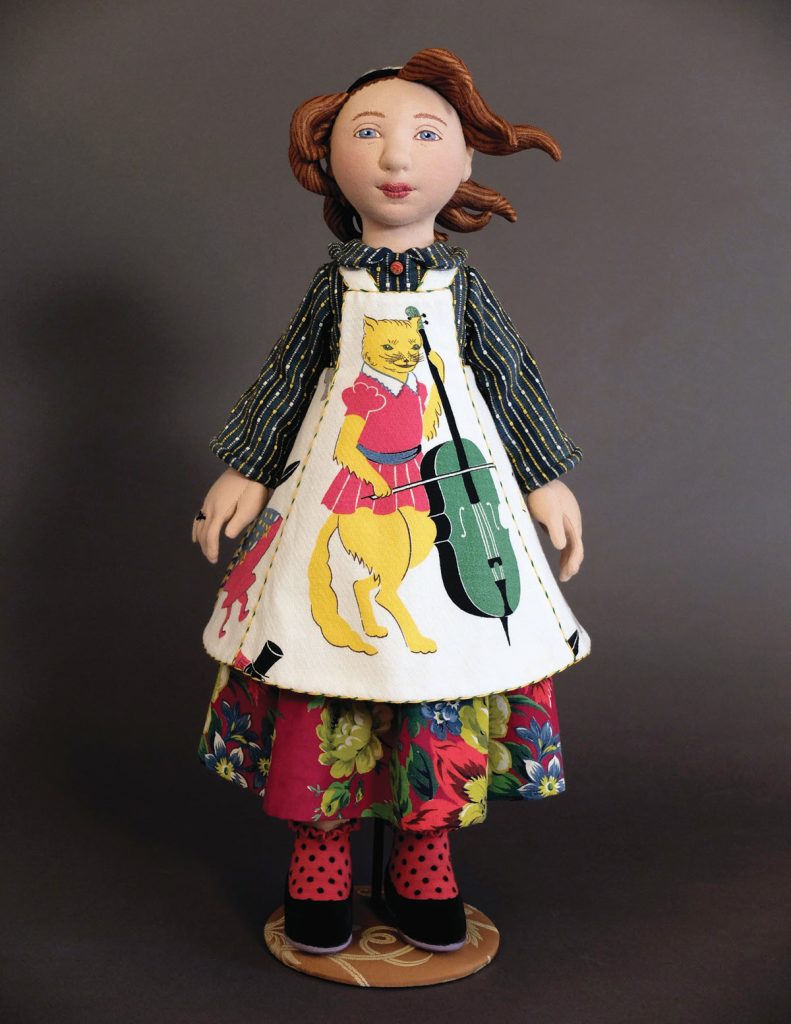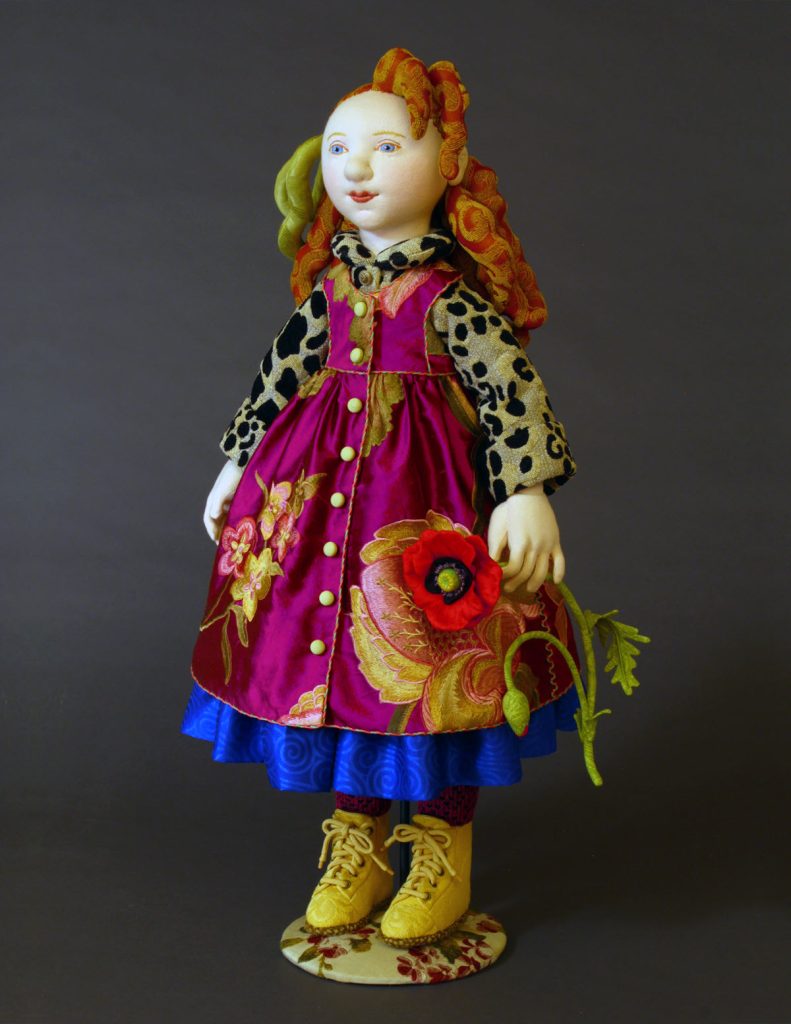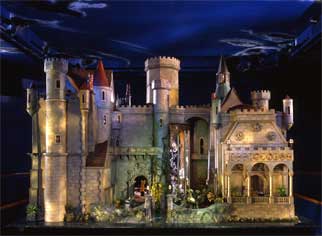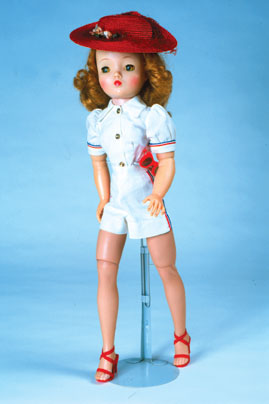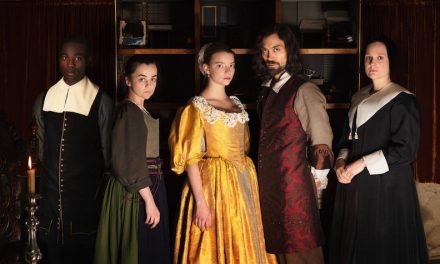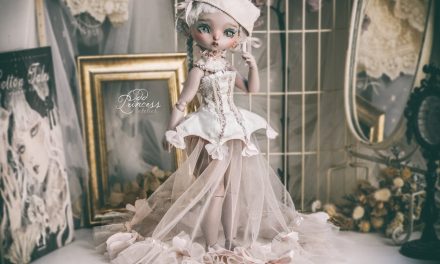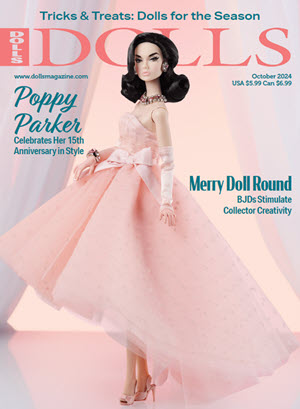By Hannah Kelley
Photos by Shelley Thornton, except where indicated
From as far back as she can remember, Shelley Thornton knew she was destined to be an artist, and with the support of family, she has continuously nurtured her imaginative mind. As most creatives do, she works in multiple mediums, but she has a particular affinity for making bold cloth art dolls. The unexpected but cohesive mixing of patterns, colors, and shapes forms the basis of her signature style.
Thornton grew up in Lincoln, Nebraska. Identifying strongly with the gentle landscape and big sky of her home state, she has remained there for much of her life. Dolls were a common fixture throughout her childhood, foreshadowing her current endeavors. She said, “Early on, my favorites to play with were Madame Alexander’s 8-inch Wendy dolls. I learned to sew, figuring out how to make primitive clothes by hand for my various dolls. When I was about 10 years old, I made a large cloth doll from a kit, and she became my favorite.” Little survives from Thornton’s first attempts at dollmaking, one exception being a jointed, hand-stitched cloth clown marionette she made in fifth grade.
She obtained an education in printmaking and graphic design from the University of Nebraska-Lincoln and made filmed cell animation for a short time thereafter. Thornton said, “I was also partnering with my friend Rodney Lamberson to make wooden toys laminated with my offset-printed drawings to sell at craft fairs. I love wood, but that turned out to be a fairly short phase that was essentially about the drawings.” During that time, she created a pair of dolls using wood decoupaged with watercolor and pencil drawings — they were her first intentional art dolls.

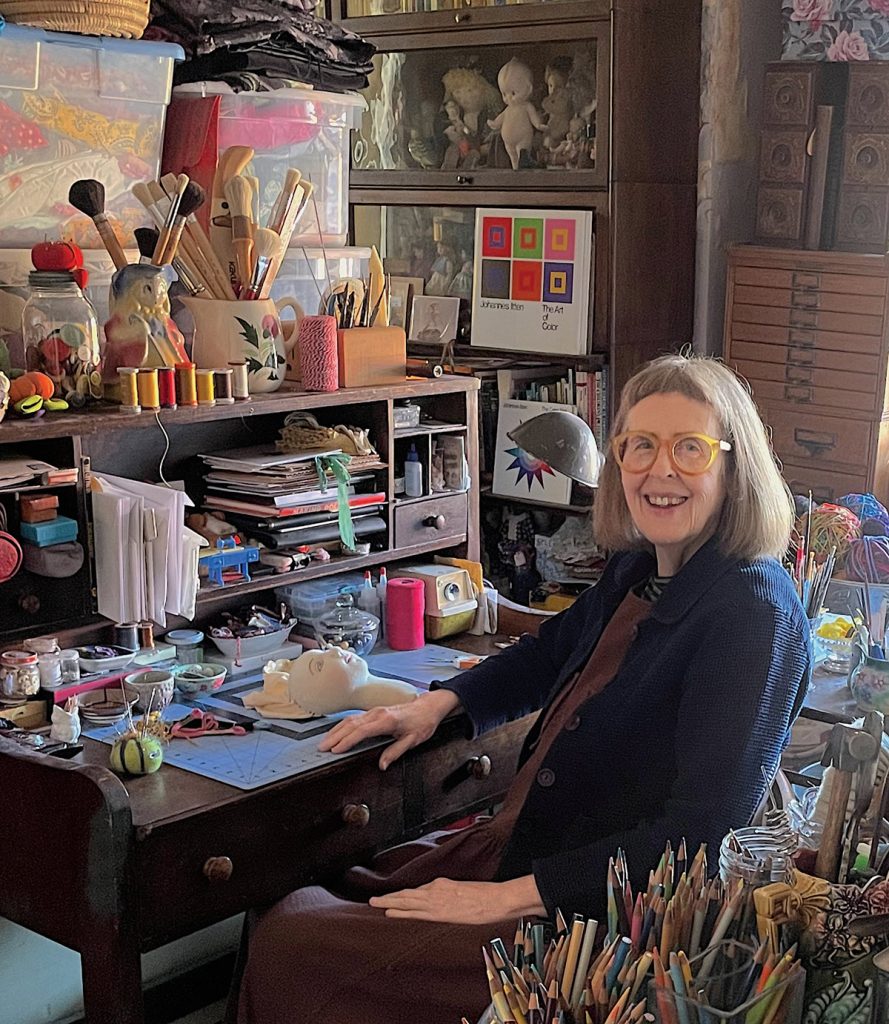
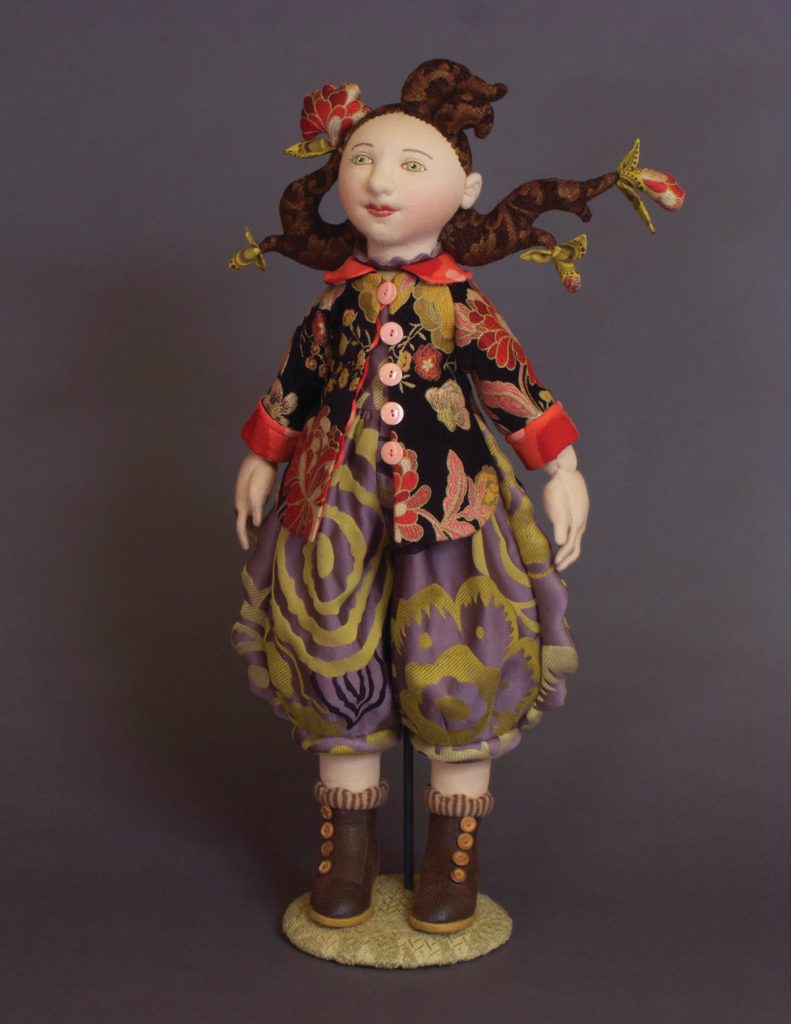
A 20-year career as an illustrator followed and included a stint living and working in New York City while Thornton established a client base. With time, she developed a set of visual preferences, which were translated into her professional work and experimentation with dolls.
“Color language and form language are usually the loudest voices in style. Individual preferences naturally determine the elements of style. My preferred color palette is generally subtly under-saturated and often whole-color-wheel-based (using bits from all around the wheel), leading me to enjoy complementary schemes and primary schemes. I’m happiest if all basic colors of the spectrum are represented in a piece of work, even if it’s in tiny bits.” Thornton added, “The type of forms and shapes I prefer in sculpting and in patterns are what I like to call ‘friendly’ forms. Rounded and swirly, not hard, straight, and pointy. Scallops and flowing, not straight ruled lines and acute angles. Organic, not mechanical. These preferences dominate the feeling of my style, but that’s not to say that their opposites are always unable to find a useful place in my compositions. Contrast adds context and meaning.”
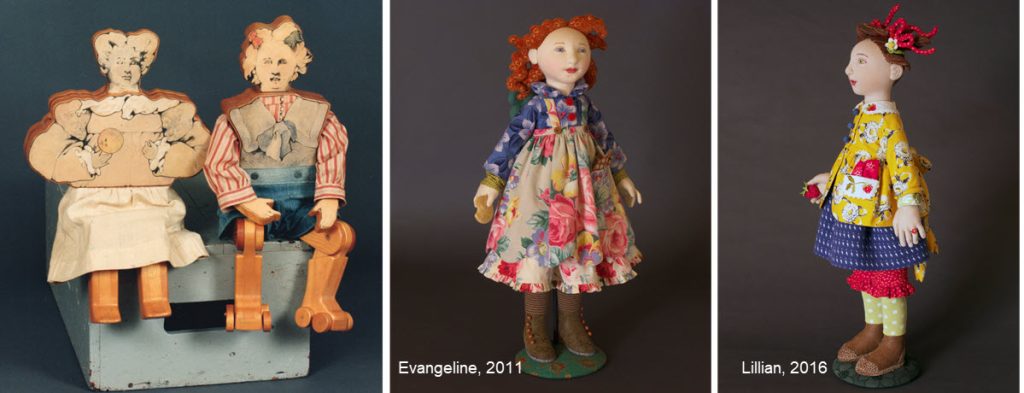
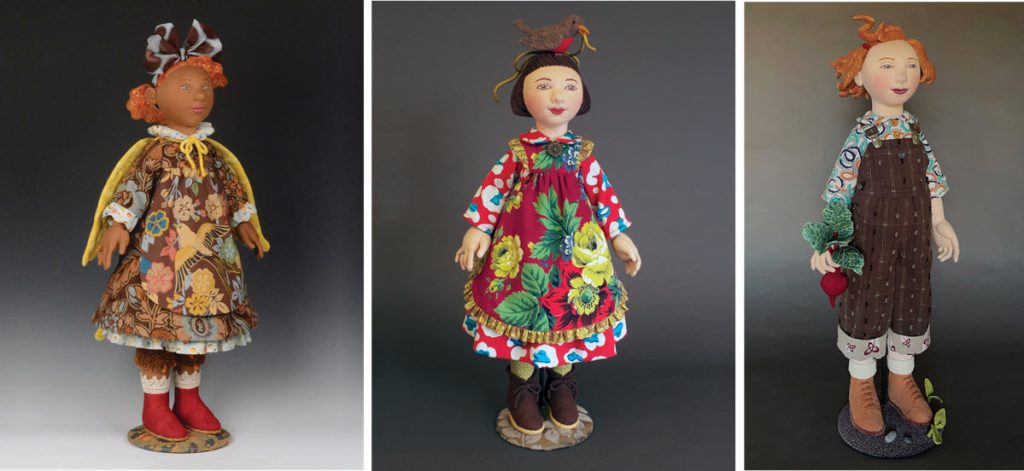
With the advantage of already being a working studio artist, Thornton said, “I switched gears in 1993 and started to make textile art dolls as my mode of artistic expression. Fabric collecting, clothing design, patternmaking, and sewing have been major passions of mine since I was a child, so the transition was natural and afforded me a second career that was more compatible with my other cherished vocation — being a stay-at-home mother of two.”
Before starting on a doll, careful planning takes place. Thornton emphasized that the style of the clothing dictates the type of character who will wear it, not the other way around. Because she makes heads first and hair, eye, and skin colors need to enhance the clothing composition, she must make fabric decisions up front. She makes her selections from both vintage and new fabrics she’s accumulated. “I’m always looking at fabric stores, thrift stores, antique shops, and online for pieces that I feel a heart-stopping connection to,” she said. “I buy the fabric that I have a strong response to and add it to my palette, even if I have no idea if, when, or how I will ever use it. I also take donations from people who think they know what I like. However, it will never appear in my work unless they are spot-on accurate in understanding my preferences. I admit that sometimes my choices are a bit quirky.”
With fabric options in hand, Thornton lays them out in the positions, shapes, and proportions they will occupy in her compositions. She said, “I try different things until I’m satisfied that it’s more than just working. It has to make me excited to see the finished project. Sometimes, if something isn’t working during the process, I’m not opposed to changing a fabric out to improve the harmony and balance. I have found the study of color theory fascinating and useful as a tool for predictable expression but also work a lot with color intuitively. Sometimes it’s meaningful to break rules and create surprises.”
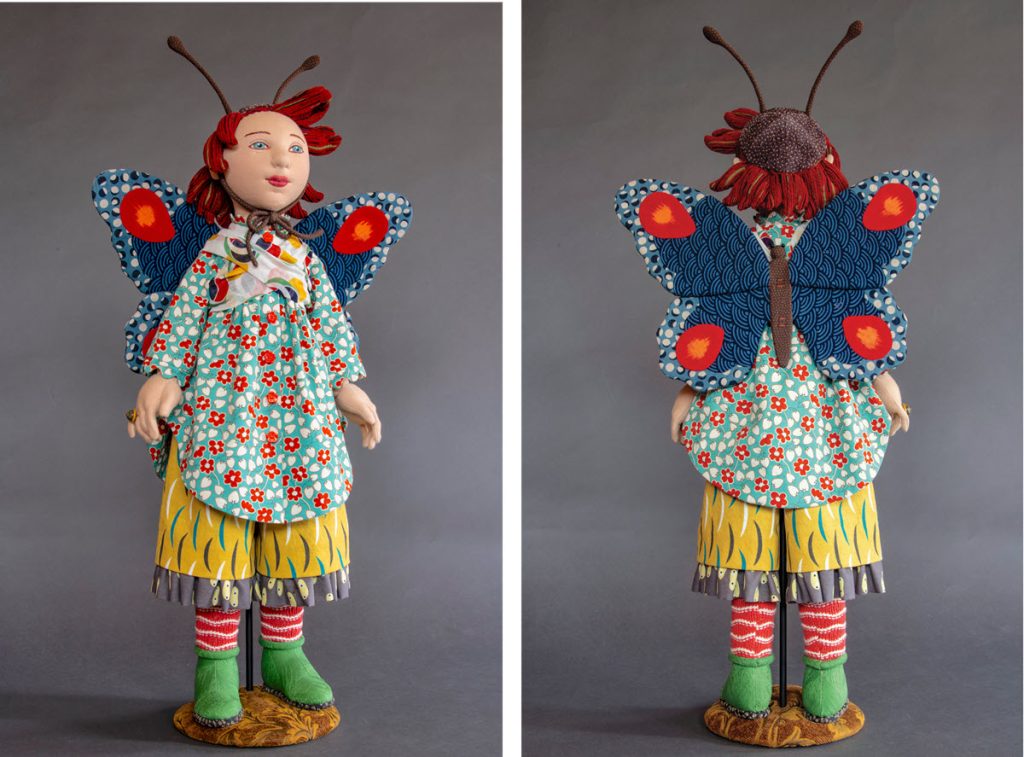
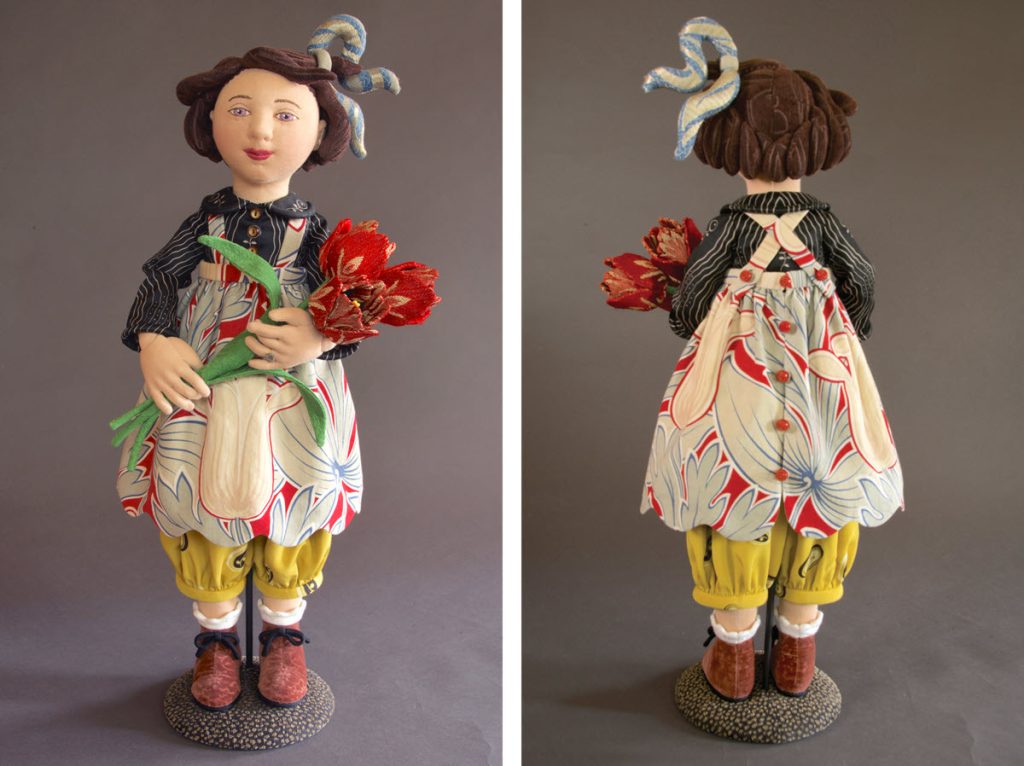
For each doll, Thornton needle-sculpts the face and covers the sculpting stitches and seams with a cotton-knit “skin.” She then hand-embroiders the eyes and lips. Because it is important to her that the dolls be posable, she has a method to incorporate wooden ball joints, too.
As if the fabric choices, face-sculpting techniques, and joints weren’t enough to distinguish her work, she said, “I am also known for my stuffed cloth hair, which allows me to approach hair in a sculptural manner and retain the consistency of the fabric medium throughout the piece. I have always loved sculpted hair, like we see in classic marble figures, old china heads, and some mid-century plastic dolls. The simplification of forms, and eschewing the creation of each and every hair strand, is also an important feature of my style.” Each section of hair is usually made individually so it is easier to make adjustments. “I often love a wind factor. Antigravity is also fun.”
Thornton showed her first two cloth art dolls at a gathering called Doll University in California. “There, the brilliant dollmaker E.J. Taylor singled me out and asked to speak with me,” she said. “He had responded to something in that early, primitive work and continued to believe in my art always. He suggested that I apply for membership in NIADA and explained the process.” The National Institute of American Doll Artists is an international association of peer-elected artists who make dolls as their art form. “I needed a larger body of work, so I went home and made just enough work for the application process and applied the following year. I was elected to NIADA in 1995 and of course that was a proud and validating moment. E.J. and I became lifelong great friends.”
NIADA membership was just the beginning of Thornton’s successful dollmaking career. “I have had many amazing travel opportunities related to my dollmaking career,” she said. “I have been to Russia twice to show and teach. I went to Japan with a group of dollmakers, where I got to attend an opening of a doll museum that owned three of my dolls. I have also shown work in Belgium, England, Ireland, and Ukraine, as well as all over the United States.”
At the Robert Hillestad Textiles Gallery on the campus of her alma mater, she was invited by gallery director and renowned quilt artist Michael James to show her dolls in a solo exhibit in 2019. “I was thrilled. Not only was it an opportunity to be visible in my hometown but it also spurred me on to create three special projects to add to the experience: an animation to be projected 30 feet wide on the wall, an embroidered and appliquéd crazy quilt for another wall, and a life-sized fabric, quilted self-portrait. It was amazing for me to be able to see that many of my dolls all in one place. I felt a real sense of accomplishment. And the response was heartwarming. An unprecedented number of people visited the gallery over the summer, and people who really had no interest in dolls discovered that they could be an effective art form.”
Wanting to spread the joy dollmaking can bring, Thornton teaches others her techniques. In addition to sharing tips and her unique methods of construction and needle-sculpting, she encourages students to study the fundamentals of color theory and design theory and to develop their own style. “My favorite thing about teaching is to see how every person has a unique way of approaching a project,” she said. The online NIADA Academy hosts two of her courses — one showing how she makes her heads and the other discussing the evolution of a personal style.
Thornton has made 60 cloth art dolls since beginning this journey, and she has no plans to stop. She is grateful for all of the kind appreciation her dolls have inspired and said, “I make art to communicate my beliefs and feelings and to make connections. I believe that encountering beauty is one of the most precious aspects of human life. I hope to contribute feelings of comfort, serenity, compassion, and optimism to a difficult world. I want people with similar priorities to not feel alone.”
Shelley Thornton
